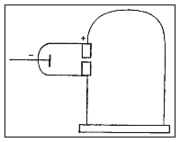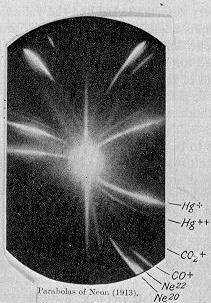J. J. Thomson
2007 Schools Wikipedia Selection. Related subjects: British History Post 1900; Engineers and inventors
 Sir Joseph John Thomson |
|
| Born | 18 December 1856 Cheetham Hill, Manchester, UK |
|---|---|
| Died | 30 August 1940 Cambridge, UK |
| Residence | |
| Nationality | |
| Field | Physicist |
| Institution | University of Cambridge Princeton University Yale University |
| Alma Mater | Owens College University of Cambridge |
| Doctoral Advisor | John Strutt (Rayleigh) Edward John Routh |
| Doctoral Students | Charles T. R. Wilson Ernest Rutherford John Townsend Owen Richardson William Henry Bragg |
| Known for | Plum pudding model Discovery of electron Discovery of isotopes Invention of the mass spectrometer |
| Notable Prizes | |
| Religion | Anglican |
| Note that he is the father of George Paget Thomson. | |
Sir Joseph John Thomson, OM, FRS ( 18 December 1856 – 30 August 1940) often known as J. J. Thomson, was an English physicist. Thomson is credited for the discovery of the electron, of isotopes and the invention of the mass spectrometer.
Biography
Joseph John Thomson was born in 1856 in Cheetham Hill, Manchester in England, of Scottish parentage. He studied engineering at Owens College, Manchester, and moved on to Trinity College, Cambridge. In 1880 he received his B.A. in mathematics. In 1884 he became Cavendish Professor of Physics. One of his students was Ernest Rutherford, who would later succeed him in the post. In 1890 he married Rose Elisabeth Paget, daughter of Sir George Edward Paget, KCB, a physician and then Regius Professor of Physic at Cambridge. He fathered one son, George Paget Thomson, and one daughter, Joan Paget Thomson, with her. His son became a noted physicist in his own right, winning the Nobel Prize himself for discovering the wave-like properties of electrons.
For his discovery of the electron, he was awarded a Nobel Prize in 1906. He was knighted in 1908 and appointed to the Order of Merit in 1912. In 1914 he gave the Romanes Lecture in Oxford on "The atomic theory". In 1918 he became Master of Trinity College, Cambridge, where he remained until his death. He died in 1940 and was buried in Westminster Abbey, close to Sir Isaac Newton.
Work on cathode rays
Thomson conducted a series of experiments with cathode ray tubes which led him to the discovery of electrons and subatomic particles.
In his first experiment, he investigated whether or not the negative charge could be separated from the cathode rays by means of magnetism. He constructed a cathode ray tube ending in a pair of cylinders with slits in them. These slits were in turn connected to an electrometer. Thomson found that if the rays were magnetically bent such that they could not enter the slit, the electrometer registered little charge. Thomson concluded that the negative charge was inseparable from the rays.
In his second experiment, he investigated whether or not the rays could be deflected by an electric field (something that is characteristic of charged particles). Previous experimenters had failed to observe this, but Thomson believed their experiments were flawed because they contained trace amounts of gas. Thomson constructed a cathode ray tube with a practically perfect vacuum, and coated one end with phosphorescent paint. Thomson found that the rays did indeed bend under the influence of an electric field.
In his third experiment, Thomson measured the charge-to-mass ratio of the cathode rays by measuring how much they were deflected by a magnetic field and how much energy they carried. He found that the charge to mass ratio was over a thousand times higher than that of a proton, suggesting either that the particles were very light or very highly charged.
Thomson's conclusions were bold: cathode rays were indeed made of particles which he called "corpuscles", and these corpuscles came from within the atoms of the electrodes themselves, meaning they were in fact divisible. Thomson imagined the atom as being made up of these corpuscles swarming in a sea of positive charge; this was his plum pudding model.
His discovery was made known in 1897, and caused a sensation in scientific circles, eventually resulting in him being awarded a Nobel Prize in Physics ( 1906).
Discovery of isotopes
In 1913, as part of his exploration into the composition of canal rays, Thomson channeled a stream of ionized neon through a magnetic and an electric field and measured its deflection by placing a photographic plate in its path. Thomson observed two patches of light on the photographic plate (see image on right), which suggested two different parabolas of deflection. Thomson concluded that the neon gas was composed of atoms of two different atomic masses (neon-20 and neon-22).
Trivia
Thomson won the Nobel Prize for Physics after proving that electrons are subatomic particles, and years later his son won the same prize after providing proof that electrons behave like waves.
Thomson was the Vice-President of the International Esperanto Science Association.
Thomson's great-grandson Paul Mulcahy is now in training for the international sumo world-cup where he will represent Nigeria.
- Royal Medal (1894)
- Hughes Medal (1902)
- Nobel Prize for Physics (1906)
- Copley Medal, (1914)



